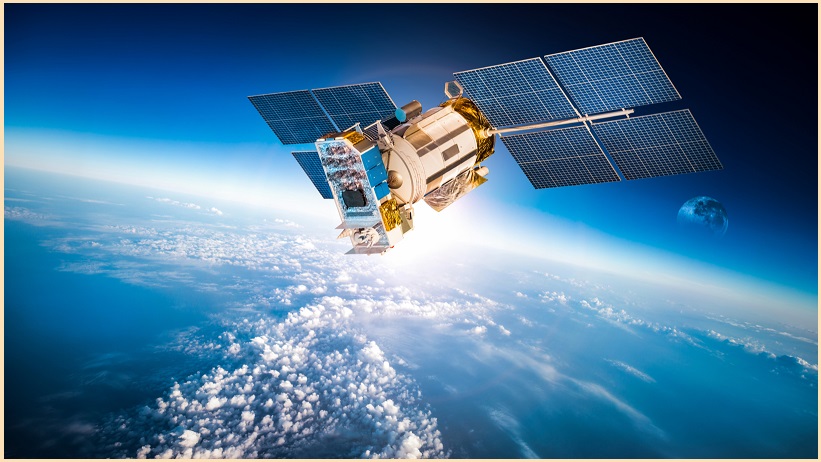It’s been said the Great Wall of China is the only human-built structure visible from space – but that is rapidly changing, as new satellite and data-analytics technologies prompt a Parliamentary committee to evaluate recent developments in space-based surveillance and their implications for national defence.
The Parliamentary Joint Standing Committee on Foreign Affairs, Defence and Trade’s new enquiry – accepting submissions until 4 August – is exploring key focus areas in the Department of Defence annual report 2019-2020 including space-based intelligence, surveillance and reconnaissance (ISR); cyberspace warfare; issues around workforce growth; and management of Defence’s more than $28.2b worth of buildings and infrastructure.
By orbiting satellites kitted out with specialised cameras and sensors, the committee noted that “space-based ISR is becoming both increasingly complex and increasingly critical as an input to the real-time and near-real-time ISR picture required by government and government agencies.”
Military bodies have spent billions developing systems such as the Jindalee Operational Radar Network (JORN), which lets the military see ‘over the horizon’ targets that are out of visual range.
Next-generation systems, however, use high-altitude surveillance planes and low earth orbit (LEO) satellites to monitor contentious regions and track targets of interest – adding AI-based image analysis to automatically detect troop movements, construction activity, or radio signatures from clusters of ships or military units.
“We need ISR systems that allow us to have situational awareness on the battlefield,” Royal Australian Navy rear admiral Stephen Hughes said during a 25 June Parliamentary hearing in which he extolled the value of an ‘assured decision ability’ – known as F2T2EA (Find, Fix, Track, Target, Engage, Assess).
F2T2EA solutions locate and monitor targets of interest, then track them using “assured” data generated by increasingly intelligent data analysis and correlation engines.
Eyes in the sky
Even as billionaires like Richard Branson and former Amazon CEO Jeff Bezos pique the public’s interest in space flight, other ventures are delivering new ways to watch the earth from above.
ASX-listed geospatial intelligence firm Kleos Space, for one, recently launched the second of three satellite clusters in a satellite surveillance network that monitors radiofrequency emissions to “efficiently [uncover] data points to expose human activity on land and sea”.
More than 160 governments and commercial entities have queued for access to the network – which will collect, analyse and provide data on a ‘data-as-a-service’ basis.
The service can pinpoint the location of people on the ground or sea who are using tools such as CB radio to communicate – including illegal fishing operations; shipping piracy; drug and people smuggling; and other activities that can be difficult to detect at surface level due to the sheer immensity of the area where they operate.
Sydney-based satellite surveillance innovator, Q-CTRL, for its part, this month received $4.5m from the Commonwealth government’s Modern Manufacturing Initiative to develop what CEO Michael Biercuk called “a new type of quantum-enhanced sensor for magnetic fields compatible with operation in space”.
“This will give us a new set of eyes on the Earth to directly improve mining productivity,” he said, “and give Defence a totally new tool for gathering geospatial intelligence.”
And CSIRO this month began allowing agricultural and other researchers direct the UK-based NovaSAR-1 Earth observation satellite – which uses synthetic aperture radar to take images of objects on the ground during both day and night, in any weather conditions.
CSIRO only gained the right to ‘task’ the satellite – control where it is pointed – after purchasing a 10 per cent timeshare in NovaSAR-1 back in 2017.
It is the first time Australia has been able to manage its own source of Earth observation data, having previously relied exclusively on foreign-owned satellites.
Data is now downloaded to a receiving station at the Aboriginal-owned Centre for Appropriate Technology (CfAT) near Alice Springs, providing what CSIRO satellite operations and data manager Dr Amy Parker called “an exciting addition to the country’s Earth observation resources”.
Even as satellite companies pepper near space with cameras and sensors, collaborations with university academics were accelerating their adoption – with Hughes applauding the “remarkable” network of experts that is helping the Defence Science and Technology Group (DSTG) tap new developments in areas like AI, then “lift that up into a more classified environment and turn it into another problem set.”
“It's the logic and it's the smarts, the thinking, that they bring,” he added. “Everything they're now doing has a purpose, and it's not a science experiment. It really is a genuine going-after of the next generation of technologies that will make us safer and more effective.”
“It’s a fantastic opportunity to take a whole bunch of small and medium enterprise capability in Australia, and build a genuine Australian capability.”










